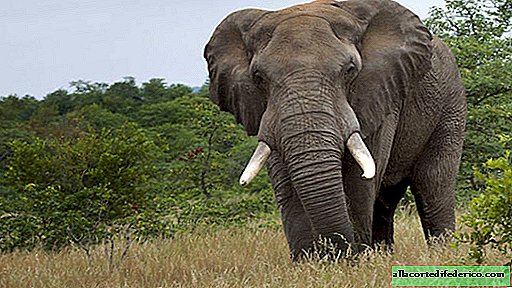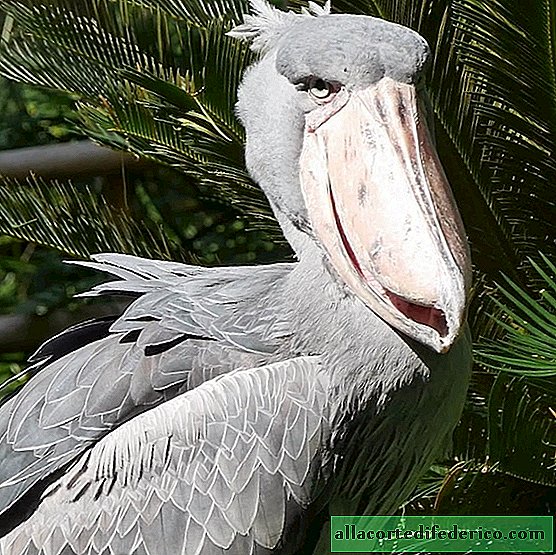So different: how do Asian elephants differ from African
Many of us know that elephants in the wild live in Southeast Asia and Africa. But this is not one and the same species of animals, but as many as three: the savannah and forest elephants living in Africa, and the Indian or Asian elephant living in Asia. These species are somewhat different from each other both in physiology and in behavior. We will talk about these differences today.
Dimensions
The savannah elephant living in Africa significantly exceeds its relatives in height and weight and is the largest of the mammals living on land. The weight of the savannah elephant ranges from 5 tons for females and up to 7 tons for males, with growth from 3 meters to 3.8 meters.
 African savannah elephant
African savannah elephantAt the same time, the Asian elephant, confidently occupying second place in the list of the largest land animals on the planet, weighs from 2.7 tons (females) to 5.4 tons (males). The growth of Asian elephants varies from 2.5 meters to 3.5 meters.
 African forest elephant
African forest elephantAfrican forest, living in rainforests, the elephant is the smallest living in the elephant family. His height does not exceed 2.4 meters at the withers.
 Asian elephant, indian subspecies
Asian elephant, indian subspeciesTusks
Elephant tusks are modified upper incisors that serve animals for food and protection from enemies. African savannah elephants, both females and males, have the largest tusks, whose weight can reach 140 kilograms and a length of 3-4 meters. In Asian elephants, these figures are much more modest: 1.6 meters with a weight of 25 kilograms. It is worth noting that Asian males have tusks only for males, and even then not for everyone. In Sri Lanka, for example, a population of elephants lives, which generally has no tusks, even males.
 Skull of african savannah
Skull of african savannahEars

The ears of elephants are also of different shapes and sizes. African elephants in the savannah have the largest ears necessary for efficient evaporation. Asian elephants have significantly smaller ears.
Physiological features
African savannah elephants have longer legs, which, most likely, is associated with living in an open area and their eating habits, because their main food is juicy leaves on the tops of trees and bushes. But Asian elephants, which feed on grass and greens from the lower tiers of the forest, have shorter legs. There are differences in the structure of the skeleton: African elephants have 21 pairs of ribs, and the Indian - 19. Females of African savannah elephants are able to bear offspring only when they are 25 years old, but Asian elephants become mothers for the first time as early as 15-20 years old.
Habitat
African savannah elephants live in open spaces and make frequent migrations over long distances in search of food and water. But forest African elephants and Asian elephants are very consistent and prefer moist tropical forests.
Evolution

By their genetic characteristics, the African savannah and the African forest elephant are the closest to each other, which for a long time they even considered one species. But scientists were able to find out that these species separated about 2-5 million years ago and that over 500 thousand years their populations practically did not interbreed. But Asian elephants are closer to extinct mammoths than to African counterparts. The Asian elephant is currently divided into several subspecies living in isolated populations. These are Indian, Sumatran, Sri Lankan and Borneian elephants.
Character and Taming

Asian elephants have a much more good-natured and complaisant character than savannahs. They are easy to tame, and they practically do not show aggression towards people, which cannot be said about their large African counterparts. It is Asian elephants who perform in circus shows, help people in hard work in the countryside of Southeast Asia, in ancient times, trained elephants even participated in military battles. But the African elephants, although they tried to tame, but did not achieve much success in this. Moreover, safari tourists are always warned that a female with an elephant can be more dangerous than a pack of lions.


















